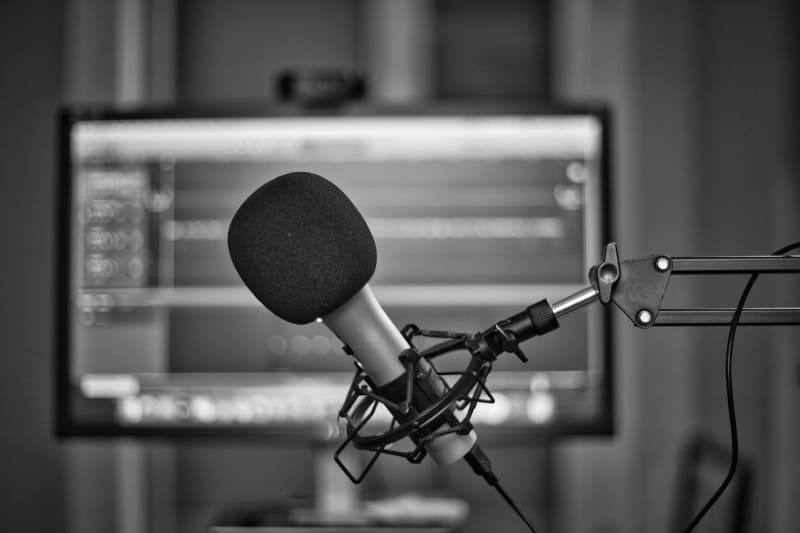Polar Patterns. No, it has nothing to do with weather changes in the north pole like I’ve heard some people say, this is a big deal for podcasters, especially for those just starting, and there seems to be a lot of confusion around the topic.
“What is a polar pattern?”
“How does that affect the quality of my podcast audio?”
“What particular polar pattern is the best for my podcast?”
These are a few of the questions podcasters tend to ask when getting a microphone.
When it comes to microphones, choosing the right fit for your podcast can be quite complicated, especially if you have no idea what polar patterns mean or how they work. But don’t worry, I will break down this seemingly complex subject matter into bits in a bid to assist you in choosing the best fit for your podcast.

Table of Contents
What Is A Microphone Polar Pattern?
Polar patterns, also known as pickup patterns, describe the sensitivity or how a microphone responds to sounds from different directions.
Generally, polar patterns are classified into two main categories: the omnidirectional polar pattern and the second, unidirectional.
Unidirectional means the mic responds better to sounds coming from a specific direction and has less response from other approaches.
A term associated with unidirectional microphones is what is called the acceptance angle. Acceptance angle refers to the pitch the mic will pick up sounds best.
Another popular term attributed to unidirectional polar patterns is called the null point. It is the direction to which the microphone is non-responsive to audio.
Unidirectional polar patterns are broken down into cardioid, hyper-cardioid, bidirectional, sub cardioid, and shotgun.
Although there are several polar patterns out there, each one has its specific purpose and knowing what they are and how they can help you utilize and maximize the microphone’s proper functionality.
So now, let’s get into what each of these polar patterns means.
Omnidirectional
As you can probably guess, the omnidirectional polar pattern picks up audio, equally, all the way around the microphone.
This type of microphone is best suited for podcasts that would occasionally call for group talks and interviews with many people without having to pass the microphone back and forth.
You should note that these microphones are used more in applications where the sound is recorded rather than in live situations where feedback can occur.
Cardioid
The most popular unidirectional polar pattern is the cardioid. The word cardioid comes from “cardio,” referring to the heart because the polar plot of this pattern is in the shape of a heart.
It means that cardioid microphones are most sensitive to sounds coming from the front and less susceptible to sounds from the sides. The most vigorous rejection is from audio coming from the rear of the microphone.
Cardioid mics are probably the best for solo podcasting. They isolate your voice and reject unnecessary sounds present in your environment, making your audio crisp, clear, and free of noise.
Hyper-Cardioid
Hyper-Cardioid is also another type of unidirectional polar pattern, also known as Super-Cardioid.
Hyper-cardioid mics, like cardioid, have the most fantastic pick up from the front. With more sound rejection to the sides but the acceptance angle of these mics is 100° compared to that of the conventional cardioid which is 120°, so it’s much tighter and to gain this more familiar pattern, the mics have a small lobe of pickup right at the back of the microphone.
Although Hyper-Cardioids are generally used where more sound isolation is required, they are not suitable for podcasting.
Bi-directional
This type of polar pattern, often called the figure-8 polar pattern because the polar plot looks exactly like the number 8.
Bi-directional microphones pick up sounds equally from both the front and back while rejecting those coming from the sides.
If you will be having and interviewing guests on your podcasts occasionally, this microphone is a great choice, and it’s the perfect fit for podcasts with two key hosts.
Sub-Cardioid
Next is the sub-Cardioid unidirectional polar pattern.
Sub-cardioid microphones have a wider acceptance angle of 170° than the tighter acceptance angles of both the cardioid and hyper-cardioid microphones. As such, it picks up sounds from a more extensive range.
Subcardioids are for picking up audio from a subject that moves around a lot, but it’s not a great fit for podcasting.
Shotgun
The last polar pattern we’re going to be looking at is the shotgun, also known as the line polar pattern.
Shotgun microphones get their name from their design. They are usually thin, long, and shaped like the barrel of a shotgun.
They are better at rejecting ambient noise and off-axis sound sources than other microphone types. Its narrow pick up angle allows these mics to be located somewhat farther from the source than the conventional mic.
They are used for broadcasting, TV and film production, sports, and other applications where it’s impractical or undesirable for the subject to wear or hold a microphone. It’s not necessarily the best fit for a podcast.